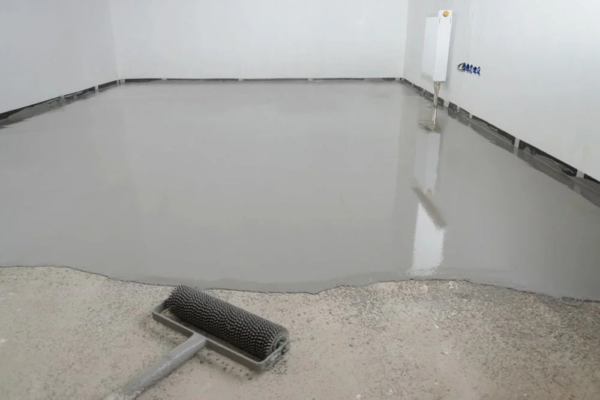Epoxy flooring is becoming popular in residential as well as commercial settings due to its durability, aesthetic appeal, and versatility. Understanding epoxy flooring will help you make an informed decision about whether to use it in your garage, warehouse, or home. This page discusses epoxy flooring, including its components, benefits, installation process, and maintenance suggestions.
What is Epoxy Flooring?
Epoxy flooring is a sort of flooring system made up of several layers of epoxy resin placed to a substrate, typically concrete. The result is a smooth, durable surface that can endure high foot traffic, spills, and accidents. Epoxy flooring can be customized in a variety of colors and finishes, making it appropriate for a variety of settings.

Components of Epoxy Flooring
Epoxy flooring is made up of two primary components:
- Epoxy Resin: The major element responsible for the flooring’s durability and adhesive characteristics. Epoxy resin is a thermosetting polymer that hardens when combined with hardener.
- Hardener: A chemical that combines with epoxy resin to provide a strong and long-lasting surface. The hardener controls the curing process, which influences the flooring’s strength and longevity.
These components combine to provide a robust, chemically resistant, and long-lasting surface.
Types of Epoxy Flooring
These components work together to generate a surface that is robust, chemically resistant, and durable.
1. Solid Epoxy Flooring
Solid epoxy flooring is built entirely of epoxy and is well-known for its durability and chemical resistance. This type, including Epoxy Wood Floor, is commonly utilized in commercial and industrial environments, including warehouses, factories, and laboratories.
2. Water-Based Epoxy Flooring
Water-based epoxy flooring uses water as its primary solvent, making it more ecologically friendly and easier to work with. It’s ideal for household use, especially in garages, basements, and home workshops.
3. 100% Solids Epoxy Flooring
100% solids epoxy flooring is free of solvents, resulting in a thicker and more lasting coating. This type is commonly utilized in high-performance environments such as food processing plants and automotive shops.
4. Epoxy Flake Flooring
Epoxy flake flooring is a decorative option that blends epoxy resin and color flakes. This kind has a distinct look and is used in residential garages, retail areas, and showrooms.
5. Epoxy Quartz Flooring
This type blends epoxy resin with quartz aggregates to provide a textured, slip-resistant surface. Epoxy quartz flooring is commonly utilized in commercial kitchens, hospitals, and other areas where safety is a priority.
Benefits of Epoxy Flooring
Epoxy flooring provides multiple benefits, making it an excellent choice for a variety of applications. Some of the main benefits include:
1. Durability
Epoxy flooring is extremely durable and can handle high foot traffic, making it perfect for commercial and industrial applications. It resists scratches, impacts, and chemical spills, resulting in a long-lasting surface.
2. Cost-Effective
While the initial installation cost may be more than for standard flooring options, epoxy flooring’s extended lifespan and low maintenance requirements make it a cost-effective long-term solution.
3. Easy Maintenance
Epoxy floors are simple to clean and maintain. Its seamless surface prevents dirt and bacteria from gathering, making it an ideal choice for kitchens, hospitals, and other settings that require cleanliness.
4. Aesthetic Appeal
Epoxy flooring is available in a variety of colors, finishes, and styles, allowing you to personalize your space. Epoxy flooring, with its glossy surfaces and decorative flakes, can improve the aesthetics of any setting.
5. Quick Installation
Epoxy flooring can be placed rapidly, reducing downtime for businesses. Most epoxy systems can be applied within a few hours, allowing for quick project completion.
6. Slip Resistance
Many epoxy flooring systems are slip-resistant, making them suitable for use in areas prone to spills and wetness.
The Installation Process
To ensure a successful result, various measures must be taken when installing epoxy flooring. Here is a summary of the normal installation process:

1. Preparation of the Substrate
The first step is to prepare the concrete floor surface. This may include cleaning the surface, mending any cracks, and ensuring that it is moisture-free. A clean and smooth substrate is essential for effective adhesion.
2. Application of Primer
A primer is applied to the concrete to improve adhesion and strengthen the bond between the epoxy and substrate. This process helps to prevent moisture-related difficulties and increases the overall durability of the flooring.
3. Mixing the Epoxy
The epoxy floor coating kit includes epoxy resin and hardener, which are combined according to the manufacturer’s specifications. To produce the best results, use the prescribed mixing ratios.
4. Application of Epoxy Layers
Once mixed, the epoxy is applied to the prepared surface. Typically, two to three layers are applied, depending on the desired thickness and performance. The initial layer could be a base coat, followed by a topcoat to increase durability and aesthetics.
5. Curing Process
After application, the epoxy requires time to cure. The curing period varies according on the epoxy used, the ambient conditions, and the thickness of the layers. Proper curing is required to achieve the necessary strength and durability.
6. Final Inspection and Finishing Touches
Once the epoxy has set, a final examination is carried out to assure quality. Any necessary touch-ups are completed, and the floor is ready for use.
Maintenance Tips for Epoxy Flooring
While epoxy flooring is low-maintenance, it does require some attention to ensure its lifespan. Here are a few maintenance tips:
1. Regular Cleaning
To get rid of dirt and debris, regularly sweep or vacuum the floor. Use a moist mop and a light detergent for a deeper clean. Steer clear of abrasive cleaners as they could harm the surface.
2. Immediate Spill Cleanup
Spills should be cleaned up right once to avoid damaging the flooring or leaving stains. After blotting the area with a gentle cloth or paper towel, rinse it with water and a light soap.
3. Avoid Heavy Impact
Even though epoxy flooring is resilient, damage can still occur if large objects are dropped on the surface.
4. Periodic Resealing
Consider resealing the epoxy flooring every few years to preserve its durability and attractiveness, depending on the amount of traffic and use.
Final Thoughts
Epoxy flooring is a strong and adaptable flooring option that may be used in both commercial and domestic warehouses and garages. Epoxy flooring is a smart investment for any room because of its many advantages, such as its low maintenance requirements, durability, and aesthetic appeal. Gaining knowledge about the installation procedure and upkeep guidelines will help you extend the life of your epoxy flooring and make sure it continues to be a stunning and useful surface for many years to come. This creative solution is sure to satisfy your demands, whether you’re thinking about using epoxy for a new project or updating your current flooring.

